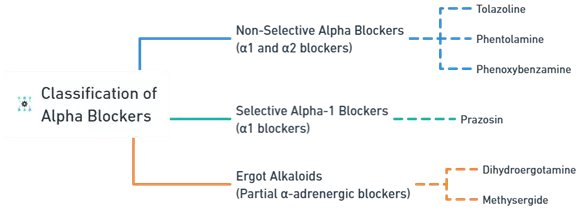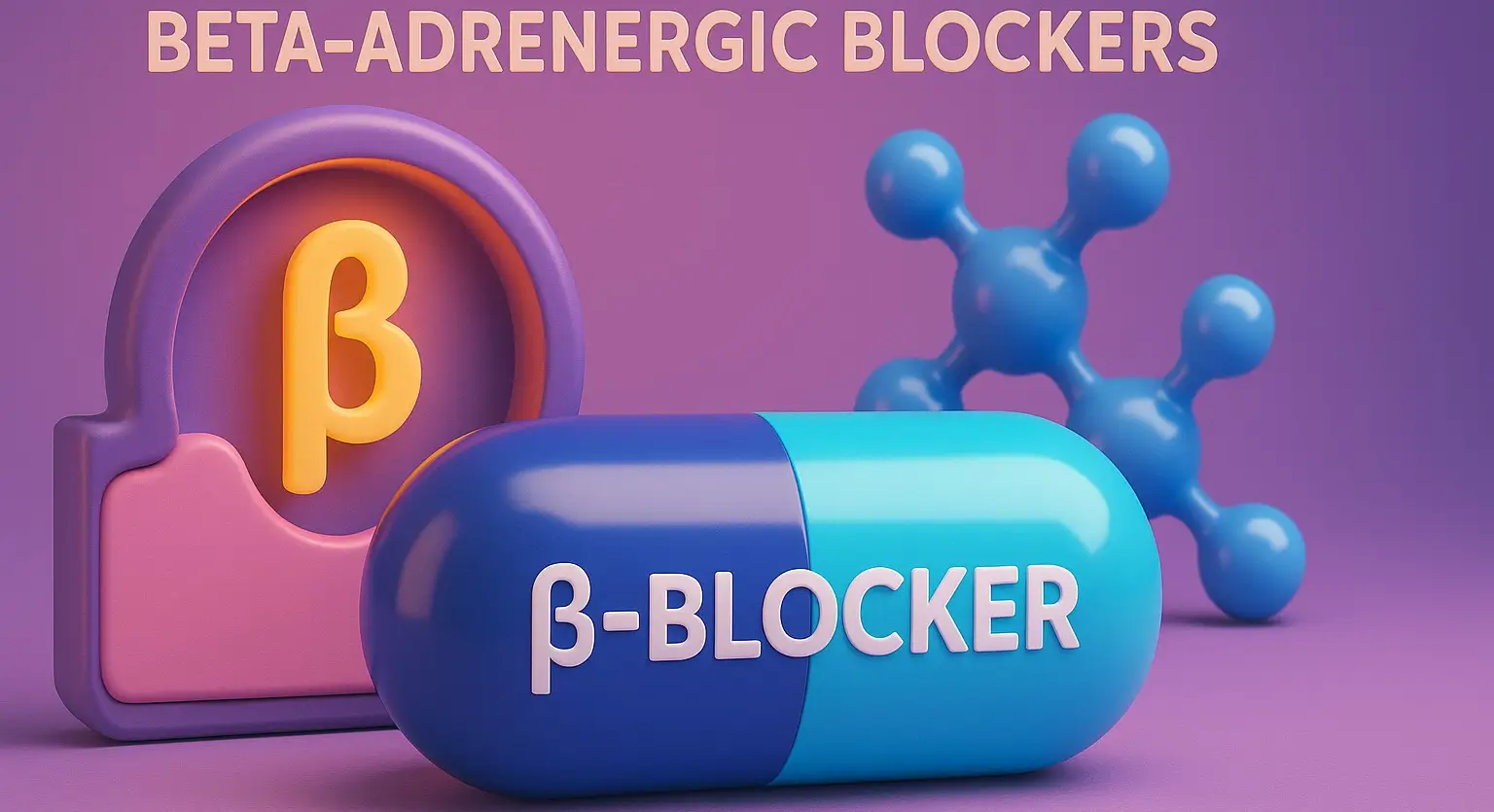- Beta Adrenergic Blockers inhibit the stimulation of beta-adrenergic receptors (β1 and β2), leading to decreased heart rate, cardiac output, and oxygen demand.
- Beta Adrenergic Blockers are commonly used for hypertension, angina, heart failure, arrhythmias, and anxiety disorders.
Structure-Activity Relationship (SAR) of Beta Blockers
- The SAR of beta blockers is important for understanding their pharmacological properties:
- Aromatic Ring: Essential for receptor binding.
- Ethanolamine Side Chain: Required for beta receptor interaction.
- Hydrophobic Groups: Affect lipid solubility and penetration into the CNS.
- Para-substitutions: Increase beta-1 selectivity.
- Presence of Additional Functional Groups: Determines cardioselectivity and intrinsic sympathomimetic activity (ISA).
Classification:
-
Non-Selective Beta Blockers (β1 and β2 blockers)
- These block both β1 (cardiac) and β2 (bronchial and vascular) receptors, leading to decreased heart rate but also potential bronchoconstriction.
- Example drugs: Propranolol, Metipranolol
-
Selective Beta-1 Blockers (Cardioselective beta blockers)
- These preferentially block β1 receptors in the heart, reducing heart rate and cardiac workload with minimal effects on β2 receptors (lungs).
- Example drugs: Atenolol, Betaxolol, Bisoprolol, Esmolol, Metoprolol
-
Mixed Alpha and Beta Blockers
- These block both alpha and beta receptors, leading to a combined effect of vasodilation and reduced cardiac output.
- Example drugs: Labetalol, Carvedilol

Effects of Beta Blockers
- Decrease heart rate (negative chronotropic effect)
- Reduce myocardial contractility (negative inotropic effect)
- Lower blood pressure
- Decrease renin release from the kidneys
- Reduce oxygen demand of the heart (useful in angina)
- Bronchoconstriction (in non-selective beta blockers)
Click Here to Watch the Best Pharma Videos

